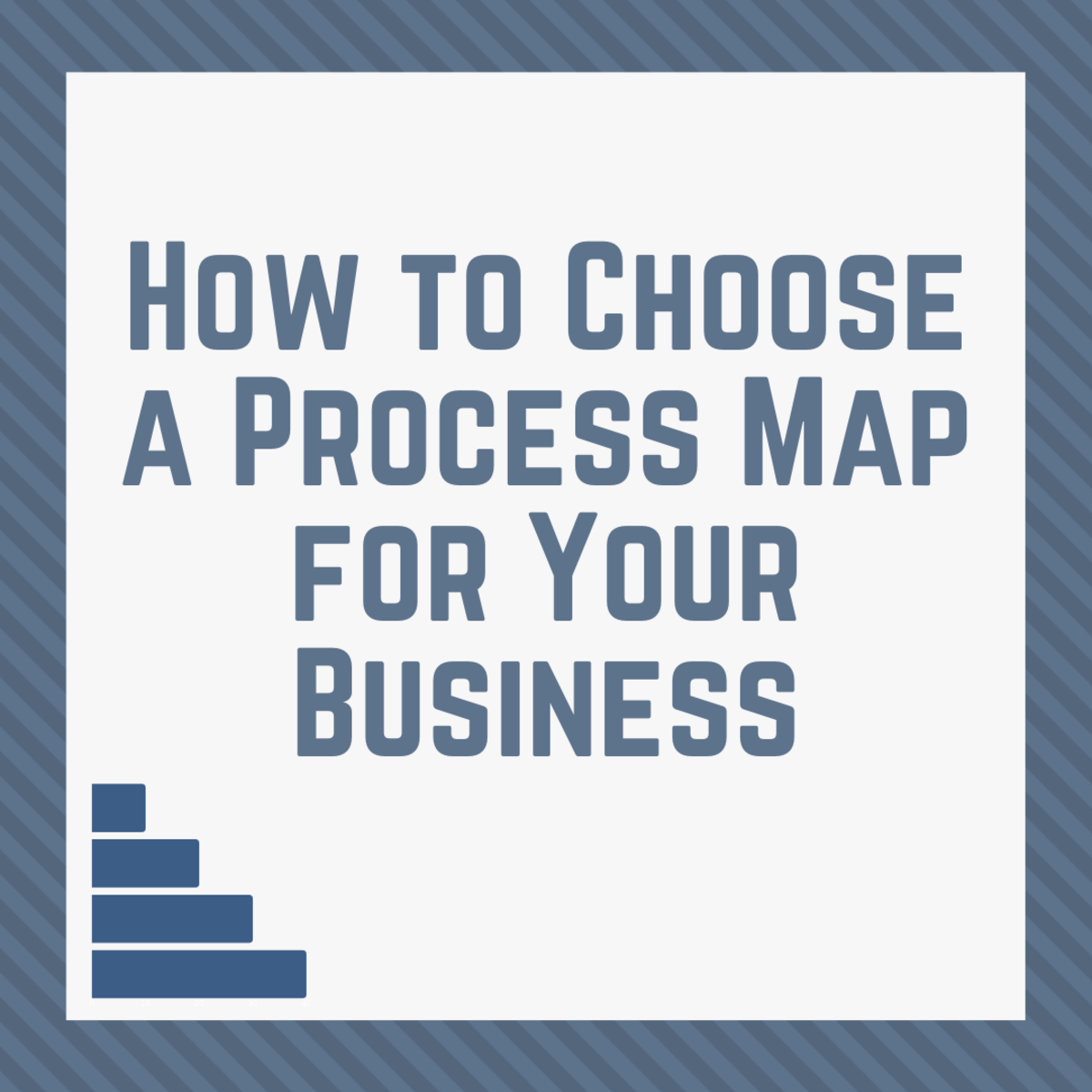- HubPages»
- Business and Employment»
- Small Businesses & Entrepreneurs»
- Business Plans
Boost Your Brand - Strategic Marketing Plans

Why Do I Need ANOTHER Plan
There is a lot of talk these days in the business literature about branding. Branding, in essence, is nothing more than creating name recognition among people or companies that are most likely to become your customers. Branding is an essential part of building yourself a niche and building a niche is an integral part of surviving in any business endeavor. More about that in another article. Today we'll focus on how to get your brand out there with a strategic media plan. Of course it's not likely that I'll be able to cover all the ins and outs of building a strategic marketing plan over the space of this article. My purpose is to convince you that you need one and you need one now.
A strategic marketing plan is essential whether you are launching a new company or a new product, service or program. Even the government develops marketing plans when launching a new program – witness the flood of Obamacare ads on television as the administration tried to mop up after its disastrous first launch. Unfortunately, after a disastrous opening, it’s a little late to create a strategic media plan – rather like the proverbial attempt to lock the barn door after the horses are out.
I spent two years taking care of up to 20 saddle horses for a therapeutic riding program. I'm here to tell you, you don't open the barn doors unless you have a plan for where all those excited horses are going to run to – not unless you want a few injured horses.
The same goes for a new product launch or startup business venture. If you plan to succeed (and who doesn't) you need to do your do diligence beforehand - conduct research, hone the product and match your product to a specific group of consumer. Preferably, that consumer group will be people who are going to want your product.
A strategic plan does several useful things:
- It clarifies your message
- It explains the benefits of buying or using your product
- It helps the consumer visualize how your product is going to make their lives better or creates a pleasurable experience for them. Basically, it demonstrates how your product will improve the quality of your customer's life.
To do all these things requires careful planning. In this hub, we're going to take a look at the elements of a successful strategic marketing plan
Capture Your Market
Capturing the market is essentially the process of taking a picture of the market that is most likely to yield you the best result. Like a fishermen looking for the best salmon run along a Northwest river, the team that develops your market plan will take a hard look at the terrain of the market you will be approaching. Like smart fishermen, you do not just toss your boat into the nearest stream – not if you plan to catch a specific fish. Instead, you will study a map of the stream and rivers that make up your fishing grounds (your market).
- Examine the size of the market
- Study the composition of the market
- Study the consumers within that market
- Measure the potential level of adoption for your product within that market
- Take a hard look at competitors
The more high quality data you have, the more likely you are to be able to catch the salmon (motivated buying customers) you want. Data is everything. Business people have been stunned and more than a little worried about the rise of Amazon.com over the past decade. Amazon has risen from an online bookseller that nobody really expected to survive to a marketing behemoth. It happened incredibly fast and for good reason. Amazon started collecting data on its customers from day one and it accumulated that data with breath-taking speed. It turns out that a person's choice of books is a window also into their buying habits. As data accumulated, Amazon founder Jeff Bezos's teams were able to quickly identify consumer desires and needs. Amazon created a lightning-quick system for finding and engaging suppliers and leveraged their ever-growing database resources to find and reach customers who wanted those goods.
If you capture a clear picture of your customers from the beginning, your odds of success go up astronomically.
Define Your Niche
It is important, almost above everything else, to define who you are and what you are selling. In this way, you define your niche of the market. If you don't define your niche, you're going to be floating around in a lake that's a mile wide, but only an inch deep and you'll be working yourself to death trying to scoop up enough water to make a decent bucketful. If you don't define your niche for yourself, the market will define it for you and most likely NOT to your advantage.
Rather than trying to be all things to everyone, you need to clearly define who you are, what your product is, what features it offers, how much better it makes life for your customer than Brand X does. You are going to have to take a hard look at who would want to buy your stuff, when they want to buy it, where they can be found in a buying mood and whether or not they will see your stuff as being a good value for the money you are asking them to spend. You'll examine cultural, geographic and economic factors that impact whether or not consumers will buy your product or service.
By defining yourself and your market, you will inevitably define your strategic marketing goals, objectives and milestones and specific activities of your marketing plan.
Clarify Your Direction
As you execute your marketing campaign, you will need to evaluate how things are going. It is essential to a Strategic Plan that you carefully plan what evaluation tools you are going to use and create a plan for using them and capturing the data you acquire from those evaluation tools. And don't skip the part where you make sure that data gets to your team in a meaningful way. More than one marketing campaign has failed because the marketing team didn't realize the whole thing was falling flat with customers. Proper evaluation tools should send up big red flags and wave them in the faces of the people responsible for fixing any problems.
Evaluation tools should test for things like:
- Is your message clear?
- Does your message reach the number of consumers you intended it to?
- Does the product work like it is supposed to?
- Does the advertising and promotion give the impression you intended it to?
- Does anything about the marketing campaign confuse customers?
- Do you need to pull the product or revamp it?
- If you do make changes in the product or promotion activities, do the changes work?
Test the product, evaluate the marketing campaign, collect data on customers and gather feedback. If you do, you'll be better able to make changes and to redirect a marketing push that misfires. You'll be better able to tweak the direction of your marketing efforts and stop confusing your customers.
Burning Your Brand Onto Your Market
The most common complaint you hear from late-comers into any market is that a particular company's brand is so strong that it's hard to draw consumer attention to your own product. Some brands have become so strongly identified with a product that the brand name itself has become part of the language. This can be great, but it can also dilute your brand.
In the American South, if you ask for a Coke, the clerk is very likely to ask you "What kind?" Coca-Cola made itself so ubiquitous in some parts of the world that the brand name has become a generic word for soda pop. The answer to "What kind of Coke do you want?" can be "A root beer." Gelatin deserts are called Jello whatever brand they might actually be. A paper tissue is a Kleenex even if it's made by someone besides Kleenex brand. To make a photocopy was to "xerox" something (note the small letter "x"). These companies may have done their marketing job a little too well and diluted their brands. Many of these same companies have spent decades trying recapture their brand names.
Most new businesses only dream of that kind of name recognition and obtaining that level of identification is a wildly expensive proposition for and new venture. You can, however, make a name for yourself in your market niche and that's really what you want and its far less expensive. As you develop your market plan, create objectives that will help your customers to perceive your product, service or program a thing of value specifically to themselves, personally. Make customers feel good about whatever it is you are trying to sell and about your company for bringing them such a wonderful product.
You want to brand those little heifers so they don't get away from you and go wandering off to a competitor's fields.
If you want your customer to have good feelings about your product and your brand as their go-to supplier of that product, then every single marketing objective should be designed to create customer experiences that will generate those good feelings. Do that and you will retain customers. You may even create a phenomenon in marketing called the "brand fan". These useful folk like your brand so much that they actually help promote your product by word of mouth. They wear your brand on clothing and talk about your stuff on social media.
You can't create that sort of buzz without knowing your customer very well. Weave positive brand experiences throughout your media campaign. Design your campaign so that at every consumer touch-point you create warm fuzzy feelings about your product and your particular brand.
Quick Poll
Have you ever written a strategic marketing or media plan?
References: For further reading
Writing Your Marketing Plan
When you write your plan, you need to address 7 key elements:
- The Executive Summary – A broad overview of the marketing plan. This should be the first part you address and last the last section you finish. It's an ongoing work that defines your plan.
- Marketing goals, objectives and strategies – A list of each broad marketing goal, measurable objectives designed to reach that goal and a list of strategies for completing each objective.
- The Strategic Vision Statement – This is a broad picture of just what things will look like if this marketing plan succeeds. Paint a picture of what success is going to look like.
- Analysis of Expenditures – What will all this cost, how much will you spend to execute each strategy and a combined budget for everything.
- Media Objectives – A set of measurable objectives for each type of media you will use to promote the campaign with clearly defined ties back to specific goals, objectives and strategies. Every media activity should be related to the plan and must further the goals of the plan.
- Milestones – Clearly defined points of time at which certain objectives should be accomplished. As data comes in and the plan is revised and tweaked, the dates associated with milestones may change somewhat, but avoid moving them around to suit the comfort of the marketing team. Hard deadlines inspire productivity.
- Evaluation Plan – This plan ties each marketing strategy and activity to specific evaluation activities and instruments so that, as far as possible, everything gets measured. The evaluation plan must also include mechanisms for getting evaluation data and reports into the hands of the marketing team in such a way that a response to the information is demanded. The evaluation plan will show milestones, list evaluation instruments and the place of those instruments along the timeline. It will create flowcharts for all marketing plan activities.
No business or service or program that hopes to succeed should move forward without a clear plan for strategic marketing. The movie, "Field of Dreams" was committing egregious balderdash when it was said that, "If you build it they will come." The truth of the matter is that you want to figure out where "they" are going, what they are looking for and then, build it directly in their path.
That's what a strategic marketing plan helps you do.
© 2014 by Tom King









